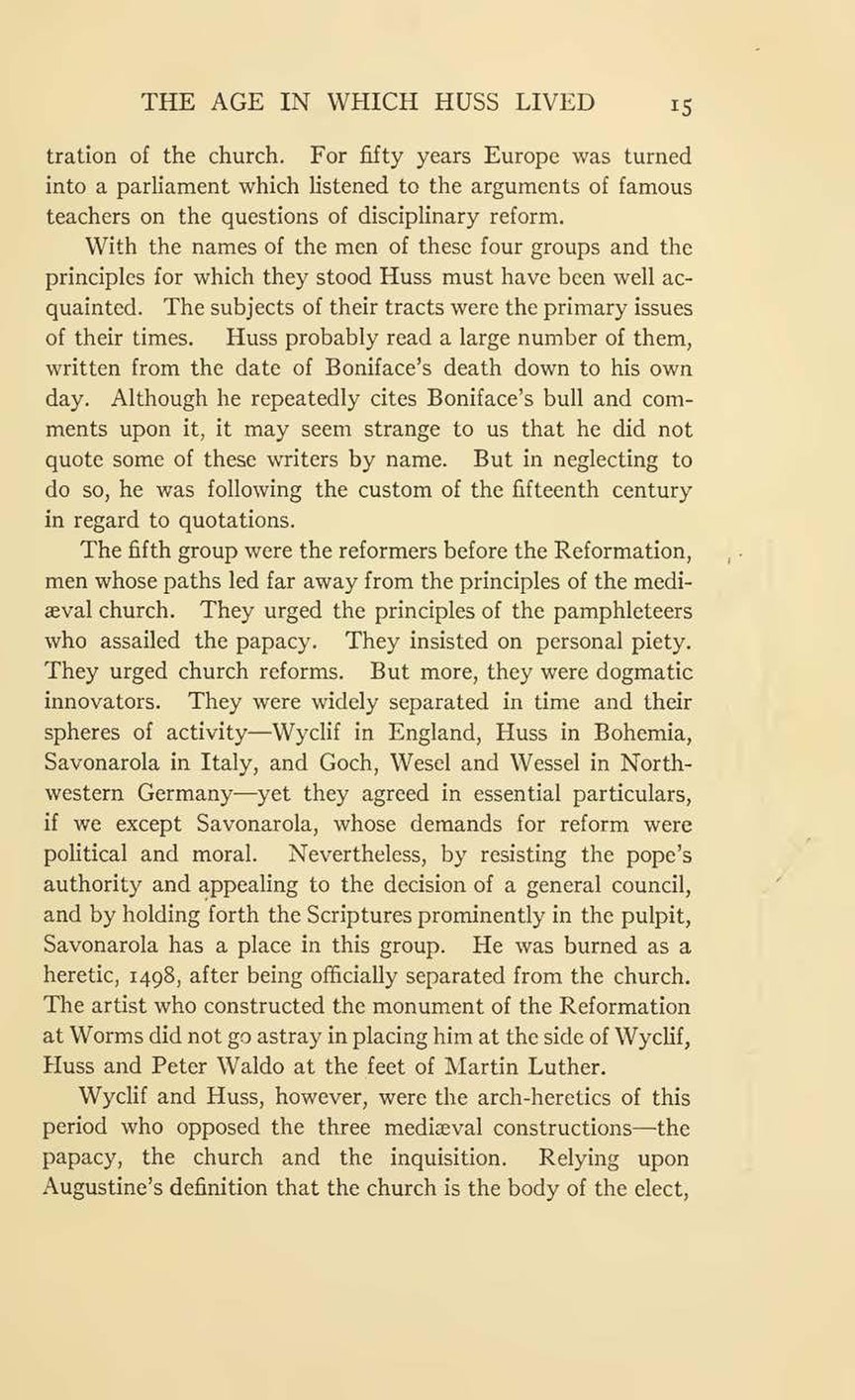tration of the church. For fifty years Europe was turned into a parliament which listened to the arguments of famous teachers on the questions of disciplinary reform.
With the names of the men of these four groups and the principles for which they stood Huss must have been well acquainted. The subjects of their tracts were the primary issues of their times. Huss probably read a large number of them, written from the date of Boniface’s death down to his own day. Although he repeatedly cites Boniface’s bull and comments upon it, it may seem strange to us that he did not quote some of these writers by name. But in neglecting to do so, he was following the custom of the fifteenth century in regard to quotations.
The fifth group were the reformers before the Reformation, men whose paths led far away from the principles of the mediæval church. They urged the principles of the pamphleteers who assailed the papacy. They insisted on personal piety. They urged church reforms. But more, they were dogmatic innovators. They were widely separated in time and their spheres of activity—Wyclif in England, Huss in Bohemia, Savonarola in Italy, and Goch, Wesel and Wessel in Northwestern Germany—yet they agreed in essential particulars, if we except Savonarola, whose demands for reform were political and moral. Nevertheless, by resisting the pope’s authority and appealing to the decision of a general council, and by holding forth the Scriptures prominently in the pulpit, Savonarola has a place in this group. He was burned as a heretic, 1498, after being officially separated from the church. The artist who constructed the monument of the Reformation at Worms did not go astray in placing him at the side of Wyclif, Huss and Peter Waldo at the feet of Martin Luther.
Wyclif and Huss, however, were the arch-heretics of this period who opposed the three mediæval constructions—the papacy, the church and the inquisition. Relying upon Augustine’s definition that the church is the body of the elect,
